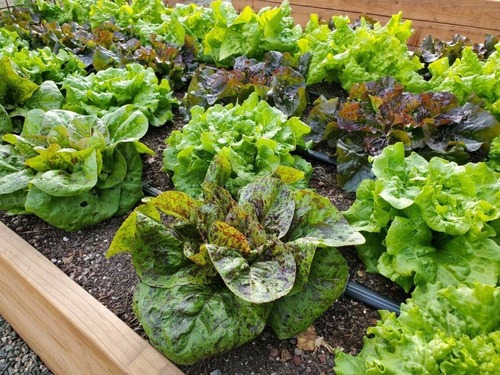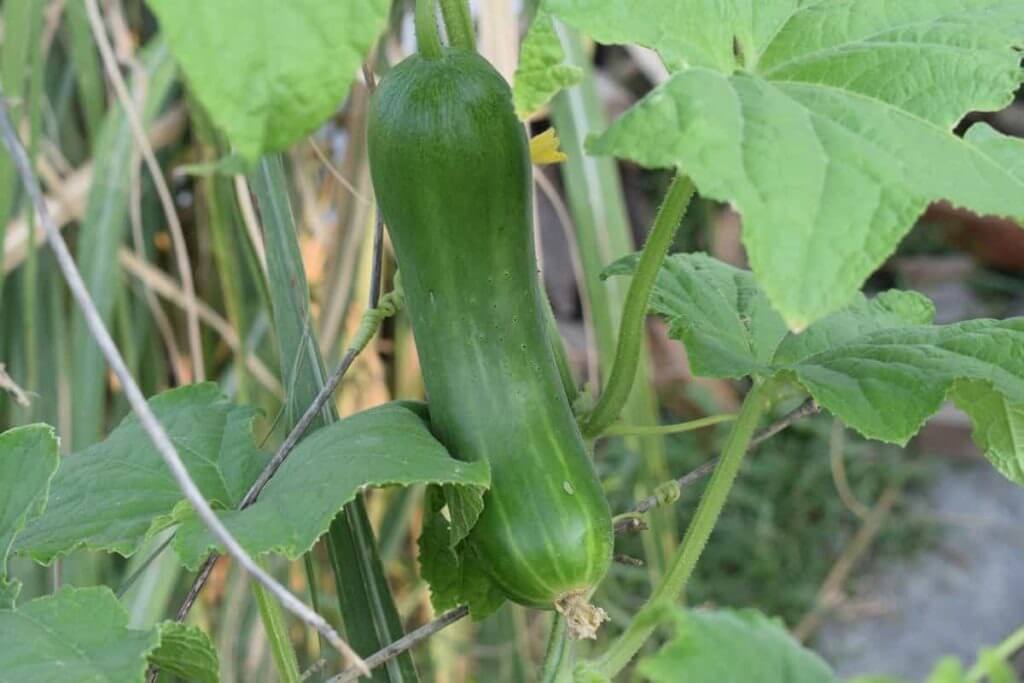Raised garden beds offer numerous advantages for growing vegetables. They provide excellent drainage, prevent soil compaction, and offer better control over soil quality, making them perfect for growing a wide range of vegetables. Whether you have poor native soil or are looking to improve your gardening efficiency, raised beds can help maximize your vegetable yield.
In this article, we’ll explore the top 8 vegetables to grow on raised garden beds, their specific growing requirements, and tips to ensure you get a bountiful harvest from your elevated garden space.
1. Tomatoes
Tomatoes are one of the most popular vegetables to grow in raised garden beds due to their need for warm soil and good drainage. Raised beds allow the soil to heat up faster in the spring, giving tomatoes a head start on the growing season.
- Growing Requirements: Tomatoes thrive in full sun, needing at least 6-8 hours of direct sunlight daily. They prefer well-drained, slightly acidic soil with a pH of 6.0-6.8.
- Spacing: Space determinate (bush) varieties about 18-24 inches apart and indeterminate (vining) varieties 24-36 inches apart to allow airflow and room for growth.
- Support: Use stakes, cages, or trellises to support the plants as they grow. This prevents the fruit from touching the ground, reducing the risk of disease.
Tip: Amend the soil with compost or organic matter to provide the necessary nutrients for robust growth and fruiting.
2. Carrots
Carrots are root vegetables that benefit greatly from the loose, well-draining soil found in raised beds. If your garden has rocky or compacted soil, a raised bed filled with light, sandy soil will help carrots grow straight and long.
- Growing Requirements: Carrots require full sun to partial shade and grow best in loose, sandy soil with a pH of 6.0-6.8. Ensure the soil is free of rocks or clumps that might impede root growth.
- Spacing: Sow carrot seeds thinly, about 1/4 inch deep, and space them 2-3 inches apart once they’ve sprouted.
- Watering: Keep the soil consistently moist but not waterlogged to prevent the roots from becoming tough or cracking.
Tip: Raised beds help retain the soft, airy soil structure carrots need, which can be hard to achieve in ground-level gardens.
3. Lettuce
Lettuce is a cool-season crop that thrives in raised garden beds, where you can easily control the soil temperature and moisture. Raised beds are particularly effective for lettuce because they warm up more quickly in the spring and allow for easy watering.
- Growing Requirements: Lettuce prefers cooler temperatures and can be grown in partial shade, making it an ideal spring and fall crop. It grows well in nutrient-rich, well-draining soil with a pH of 6.0-7.0.
- Spacing: Space leaf lettuce varieties about 4-6 inches apart, while head lettuces like romaine need about 12 inches of space.
- Watering: Water lettuce regularly, as it needs consistent moisture to prevent bitterness in the leaves.
Tip: Consider using shade cloth in hot weather to extend the growing season for your lettuce.
4. Radishes
Radishes are fast-growing root vegetables that do well in raised garden beds because they need loose, well-drained soil to develop properly. They’re perfect for beginner gardeners or those looking for a quick harvest.
- Growing Requirements: Radishes need full sun and grow best in light, sandy soil with a pH of 5.8-6.8.
- Spacing: Sow radish seeds about 1/2 inch deep and 1 inch apart. You can thin them to about 2-3 inches apart once they sprout.
- Watering: Keep the soil consistently moist to prevent the roots from becoming woody or splitting.
Tip: Radishes mature quickly—usually within 30 days—making them an excellent crop for succession planting.
5. Cucumbers
Cucumbers are heavy feeders that love the nutrient-rich, well-drained soil found in raised beds. They also benefit from the heat that raised beds provide, helping them thrive in warmer conditions.
- Growing Requirements: Cucumbers need full sun and well-drained soil with a pH of 6.0-7.0. They also benefit from added compost or organic fertilizer to keep up with their fast growth.
- Spacing: Bush varieties can be spaced 12-18 inches apart, while vining varieties need about 36 inches and support from a trellis or cage.
- Watering: Cucumbers need consistent moisture, especially as they begin to set fruit. Avoid overhead watering to prevent powdery mildew and other diseases.
Tip: Trellising cucumbers in a raised bed helps save space and improves air circulation, reducing the likelihood of fungal diseases.
6. Beets
Beets are another root vegetable that thrives in the loose, aerated soil of raised beds. Raised beds also make it easier to control the pH and nutrients in the soil, both of which are critical for healthy beet growth.
- Growing Requirements: Beets grow best in full sun but can tolerate partial shade. They need loose, well-drained soil with a pH of 6.0-7.0.
- Spacing: Sow beet seeds about 1/2 inch deep and 2-3 inches apart. Thin seedlings to 3-4 inches apart once they emerge.
- Watering: Keep the soil evenly moist to prevent the roots from becoming tough.
Tip: Beets grow quickly and can be harvested in about 50-60 days, making them a great choice for succession planting in raised beds.
7. Peppers
Peppers, both sweet and hot varieties, thrive in raised beds due to the warm, well-drained soil that these beds provide. Peppers need plenty of sun and warmth to produce bountiful crops, making raised beds ideal for their growth.
- Growing Requirements: Peppers need full sun and fertile, well-draining soil with a pH of 6.0-7.0. Raised beds help provide the warm soil conditions peppers prefer.
- Spacing: Space plants about 12-18 inches apart, depending on the variety, to allow for air circulation and growth.
- Watering: Peppers need regular watering, but avoid waterlogging the soil. Consistent moisture is key, especially when the plants are fruiting.
Tip: Mulching around pepper plants helps retain moisture and prevent weeds, which can compete for nutrients.
8. Zucchini
Zucchini is a prolific vegetable that grows well in the rich, loose soil of raised beds. It’s a heavy feeder, so raised beds provide the ideal environment to amend the soil with plenty of organic matter.
- Growing Requirements: Zucchini needs full sun and well-drained, nutrient-rich soil with a pH of 6.0-7.5. Raised beds are perfect for ensuring the roots get enough air and warmth.
- Spacing: Space zucchini plants about 24-36 inches apart, as they tend to spread out. A trellis can help manage vining varieties.
- Watering: Zucchini needs consistent moisture, especially during fruit development. Water at the base of the plant to prevent the leaves from getting wet, which can lead to fungal diseases.
Tip: Harvest zucchini when it’s young and tender for the best flavor, usually when they’re about 6-8 inches long.

















Leave A Comment